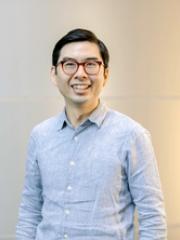Dr Conan Wang

Researcher biography
I lead the Technology-Driven Drug Discovery (Tech3D) Group at the Institute for Molecular Bioscience, UQ. We believe that the key to solving some of our world's biggest challenges, whether that be in medicine or agriculture, relies on the ability to precision engineer molecules at will. My group harnesses three technological pillars to engineer peptides and proteins, which are computational biology, molecular libraries, and nanotechnology. We aspire to design better drugs, creating next generation biotechnological agents that have real impact. These could be new cancer drugs that harness the body's immune system or new insecticides that are environmentally friendly. In these pursuits, we value advancement, fun, balance, respect, fairness, and integrity.
I have been involved in peptide and protein research for over two decades, and am highly experienced in bioinformatics, chemistry, structural characterization, biophysics, and biochemistry. I trained with experts in peptide and protein characterization: an Honours project with Professor Garry King at the University of New South Wales, Sydney, Australia (2004), an APA scholarship with Professor David Craik at the University of Queensland Institute for Molecular Bioscience, Brisbane, Australia (2005-2009) and a NHMRC fellowship with Professor Mingjie Zhang at the Hong Kong University of Science and Technology, Hong Kong, China (2009-2011) and A/Professor Andreas Hofmann at Griffith University Eskitis Institute, Brisbane, Australia (2011-2012). I returned to the University of Queensland in 2012 to join an industry partnership funded by an ARC linkage grant. I currently hold an ARC Future Fellowship and am responsible for a team of research officers, assistants and postgraduate students.
My research output has been recognised by >30 prizes and awards for leadership, research translation and fundamental research excellence, as well as numerous invitations to speak at academic and pharmaceutical conferences. I have over 100 publications and have been cited by researchers from across the world.
